The subject of today’s HDTV review is the elegantly designed LED-LCD TV Samsung UE32C6000, a midrange LED-lit LCD television designed for apartments and bedrooms with performance in mind. So without further ado, let’s move onto our review of the Samsung UE32C6000.
Note: Although we only tested the Samsung UE32C6000, our picture quality findings should be applicable to the Samsung UE32C6530, Samsung UE32C6510 and Samsung UE40C6530 which have very similar specifications but boast some extra features such as Freeview HD tuner, Internet@TV and Samsung Apps.
Design
Samsung is no stranger to crafting beauty with substance. In fact, over the years Samsung has consistently produced iconic devices that we have all come to love and adore, and the UE32C6000 is no different. The Samsung UE32C6000 features the classic piano finish with transparent border. The stand is coated with brushed aluminum accompanied by a translucent stem.
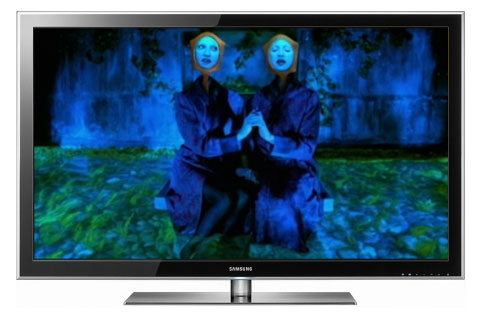
Fortunately, removing unit and assembling the stand is easy and straightforward. It helps to have someone helping but it can be assembled entirely by one person providing the unit can be placed face down on a flat surface.
For those who are green-minded, I am sorry to inform that the Samsung UE32C6000 does not feature a hard power switch, so during prolonged absence eco-lovers may want switch off the main power switch on the wall.
Connections
Since the introduction of the first Samsung super-slim LED-LCD, consumers were forced to use break-out adapters for legacy connections. Sadly, this has not changed with the Samsung UE32C6000. The location of the HDMI ports can pose a problem if the cables are bulky as the ports are in close proximity to to the side edge, so some users may be forced to use L-shape HDMI adapters if they want to keep their cables out of sight. In the future, perhaps it would be better to implement all the cabling behind the panel (akin to the location of the legacy connectors).
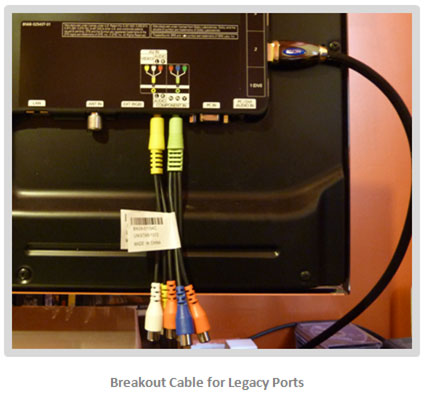
Operation
The GUI on the Samsung UE32C6000 is based on the 2009 version with enhanced responsiveness. It is now a joy to navigate through various layers of the user menu without the any aggrieving lag, which may not matter to most users but is a welcome improvement nonetheless. Frame rate also received a noticeable boost but resolution remained upsampled, which is understandable. The submenu (dubbed as Tools) allows viewers to configure the picture and sound modes as well as connect devices via HDMI-CEC (Anynet+).
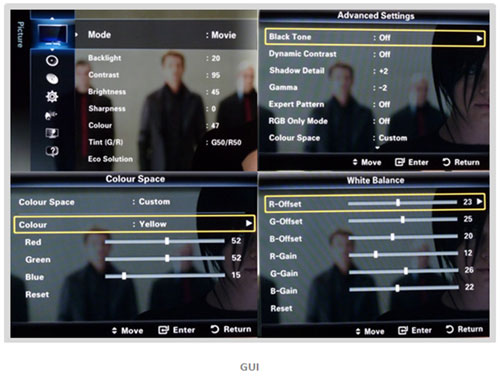
One of the chief selling points of the Samsung UE32C6000 is the ability to tweak and control every aspect of the picture quality. Unlike its competitors, the Samsung UE32C6000 does not feature ISF certification; however, it is armed with an arsenal of user configurable options that would not only appeal to professionals and enthusiasts but also to knowledgeable amateurs. Samsung embedded some simple test patterns to aid calibration, which often requires an external source. With some knowledge, the TV set can be calibrated within few minutes. It will not yield accurate results often obtained from calibrating via colorimeter, but it will definitely deliver improved image quality over the default preset.
In addition, akin to competing models, the Samsung UE32C6000 also features independent source customisation, which allows users to customise and optimise the settings for each source. The Samsung UE32C6000 also has a simple on-screen guide and a simple connection guide (located under the support menu).
Remote Control
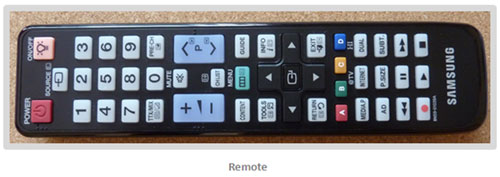
The infrared remote control supplied with the Samsung UE32C6000 is exceedingly practical but lacking in aesthetics. In my opinion, it simply doesn’t complement the display. Then again, the topic of aesthetics is highly subjective and cannot be quantified. So in terms of practicality/ functionality, the backlit buttons are extremely responsive and accurate. The layout is easy to comprehensive, and the clicker itself is light, robust and comfortable to use.
Calibration
Greyscale and Gamma accuracy are vital for portraying accurate representation of a given image. Therefore, the display must be calibrated to a set of standards used by the industry. In the case of HDTVs, the industry standard for colour space is Rec. 709 (which is similar to sRGB), and both standards share identical white point (D65) and gamma value (2.2).
Greyscale calibration ensures all greys between black and white are free from colour dominance, which is achieved by assigning the RGB values to 6500K (CCT) colour temperature. Unfortunately, it is not possible for a display to yield 100% accuracy. So the goal is to maintain errors within acceptable levels.
Note: The results below were obtained by placing the colorimeter at the centre of the screen. It is done to ensure error values are kept to a safe minimum.
Greyscale
Thanks to the effective calibration tools provided by Samsung, I was able to obtain excellent results without any excessive effort.
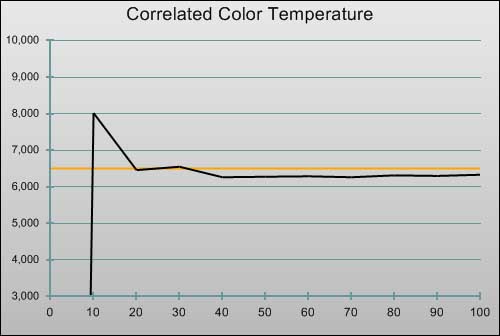 |
| Pre-calibration CCT in [Movie] mode |
 |
| Pre-calibration RGB tracking and delta errors (dEs) |
![Post-calibration CCT in [Movie] mode](/news/wp-content/uploads/2018/04/hdtv_Samsung-UE32C6000_post-cct.jpg) |
| Post-calibration CCT in [Movie] mode |
![Post-calibration RGB Tracking in [Movie] mode](/news/wp-content/uploads/2018/04/hdtv_Samsung-UE32C6000_post-rgb.jpg) |
| Post-calibration RGB tracking and dEs in [Movie] mode |
Gamma
![Gamma curve in [Movie] mode](/news/wp-content/uploads/2018/04/hdtv_Samsung-UE32C6000_post-gamma.jpg) |
|
| Gamma curve in [Movie] mode | Corresponding gamma tracking |
Colour
Samsung’s unique 3D CMS (Colour Management System) is close to perfection and allowed us to obtain virtually accurate colours.
![Post-calibration CIE chart in [Movie] mode](/news/wp-content/uploads/2018/04/hdtv_Samsung-UE32C6000_cie.jpg) |
| Post-calibration CIE chart with reference to HD Rec.709 |
Benchmark Test Results
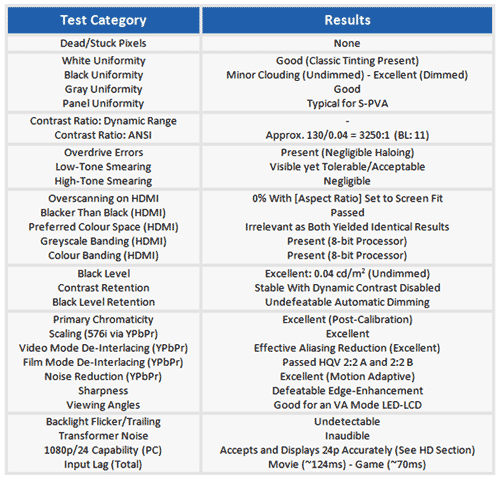
Power Consumption

Uniformity
The Samsung UE32C6000 LED-based LCD television produced (overall) good black and white uniformity. During the pure white test (100IRE), I was able to detect the classic red and green tinting commonly found on LCDs, but it was negligible at best. Backlight bleeding was present and detectable when auto-dimming is temporarily inactive and the panel uniformity was typical for a consumer grade display. There were a few visible defects and imperfections across the panel, which hinders calibration accuracy slightly. However, such errors are common to most consumer-grade LCD TVs.
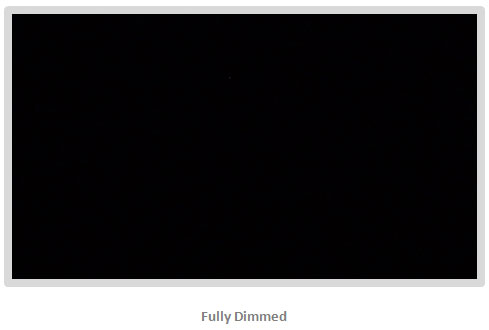
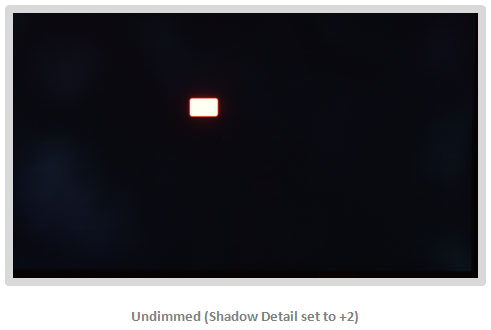
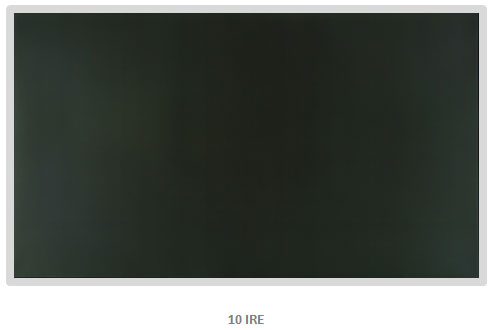
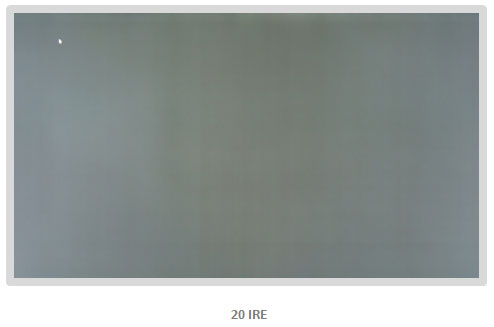
Contrast Ratio
The Samsung UE32C6000 in [Movie Mode] with white level (contrast) set to 95 yielded excellent dynamic range (beyond the meter’s capability) and ANSI of ~3250:1, which is a significant improvement over the 2009 models (also known as B Series). Sadly, auto-dimming cannot be disabled even in Game Mode and there is no option to control its intensity. However, sliding [Shadow Detail] to maximum does drastically reduce aggressive fluctuations in APL.
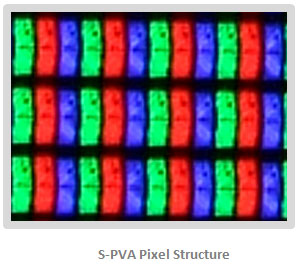
Motion Performance
With my usual tests based on PixPerAn, I was able to detect the usual overdrive errors (negligible halos that compass moving objects) and a certain degree of pixel lag, which are still common to LCD displays of late. Low-tone Smearing was present but did not cause any major issues with real-world contents.
Speaking of pixel lag and ghosting, we seem to have a new problem on the Samsung UE32C6000: ghosting caused by pulsing backlight. During the extended test period, I was able to detect highly visible doubling effect (original image accompanied by a ghost image) during fast motion when the backlight set to any number other than 20 (maximum). The doubling effect was also visible with LED Motion Plus (Backlight Scanning) engaged. However, rendering frames greater than 60 seemed to decrease the effect, which explains why when we enabled Motion Plus (Anti-Blur), the effect of doubling was reduced to negligible.
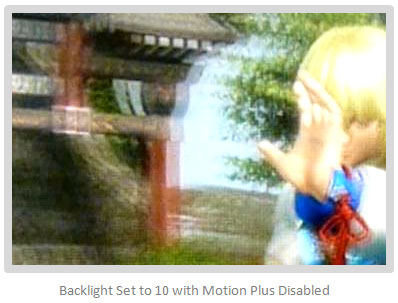
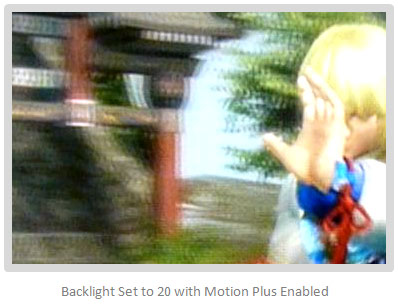
From what we’ve seen so far, the effect of doubling on the Samsung UE32C6000 can only be observed with content which are free from blur or only has negligible blur. We believe the culprit to be the pulsing backlight. Our theory is that as the power to the LEDs decreases, the latency between each pulse increases, which seems to be out of sync with the LCD display. It is also worth mentioning we have witnessed similar phenomenon with LCD TVs produced by other manufacturers.
Samsung was the first company to roll-out a 100/ 120Hz HDTV with MCFI technology, and although it helped to improve motion clarity by reducing hold-time, the implemented algorithm had problems maintaining acceptable level of quality that we have come to expect. Now it would seem Samsung are on the right track nearer to perfection. The MCFI algorithm embedded within the Samsung UE32C6000 produced fewer visual artefacts and stutter than expected when Anti-Blur is set to 6. However, it must be noted that the outcome is entirely determined by the source and content. In other words, contents with variable frame rates (e.g. Music Videos) can easily confuse the MCFI algorithm, which often leads to frame-jumps/ stutter and visual artefacts.
Overall, the Samsung UE32C6000 with Motion Plus (Anti-Blur) enabled produced excellent motion detail, which will no doubt appeal to sports enthusiasts.
Overscanning: The aspect ratio can be configured by pressing the [P.Size] button on the remote or via the Main Menu. Unfortunately, the Samsung UE32C6000 does not feature the option to zoom into contents mastered in Cinema Scope Aspect Ratio (2:39:1), though doing so will decrease perceived resolution due to cropping and scaling anyway.
Blacker-Than-Black (HDMI): The Samsung UE32C6000 accepts both 0-255 and 16-235 formats and configures itself automatically. If it fails to do so, it can be overwritten by the user via the main menu.
Viewing Angles: LED-backlit LCD HDTVs based on VA panels had the unfortunate reputation of having poor viewing angles. Thankfully, it would seem that Samsung has acknowledged this issue, and has enhanced the viewing angles to an acceptable standard. The SPVA panel embedded within the Samsung UE32C6000 yielded rather fine all-round viewing angles, with serious shifts in colour and contrast limited to extreme angles when viewed from the recommended viewing distance of 1.6 meters. However, gamma shift does desaturate light tones to an extent but it’s common to all VA-based panels.
Sharpness: The Samsung UE32C6000 fully supports full 1:1 pixel mapping as well as the option to configure edge-enhancement.
Picture Quality
For evaluating image quality in the real world, we used a series of images known to expose even the most hidden artefacts and errors.
Note: The following three tests were conducted under [Movie Mode].
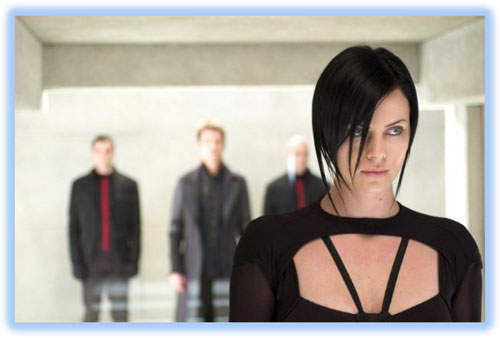
The Samsung UE32C6000 yielded good results following simple calibration in [Movie Mode]. The mass shades of warm colours that envelop Charlize Theron’s face, neck and chest were identifiable though unnaturally warm. However, the average consumer may not be able to detect the error without a reference display for side-by-side comparison.
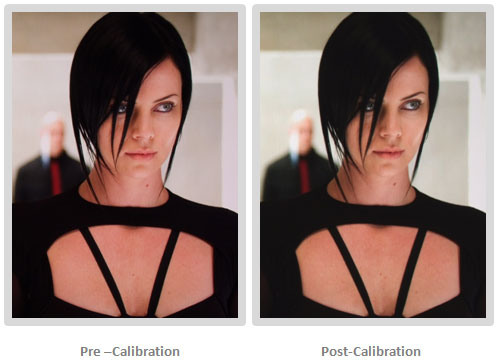
The white balance controls on the Samsung UE32C6000 allowed us to rectify the red shift and we immediately noticed an overall improvements in greyscale and colour accuracy. Thankfully, the default colour decoding (auto) was within tolerable level, so the difference between pre and post calibration was negligible at best (visually speaking of course). The final calibrated image appeared natural and true to life as we expected from a Samsung display.

We used the image above to detect visual inaccuracies in greyscale, gamma and black crush; and the performance of the Samsung UE32C6000 was above average (prior to greyscale calibration). There was no evidence of any serious black crush, nor could I detect any form of gamma error. However, the presence of red dominance was obvious. That stated, most viewers probably won’t be able to spot the errors in the absence of a reference display.

After greyscale calibration, the rendered image was on par with one of our reference display models (the Dell 2209WA). It is worth noting that CMS had very little impact.
High Definition
High-def materials on the Samsung UE32C6000 were beautifully rendered, and video noise was kept to a bare minimum. The Ultra Clear Coating provided a sense of additional depth and lucidity comparable to competing high-end models. However, reflection did pose a problem and could be controlled better. The lack of 10-bit processor was an oversight, but visible posterization was limited to certain test patterns.
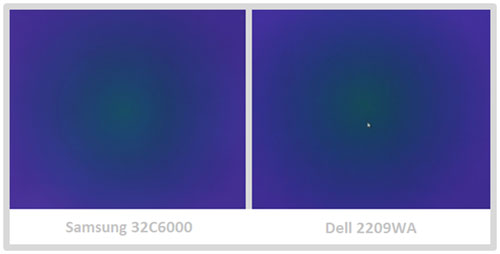
As for the auto-dimming, it would have been ideal to have an option to manually control its intensity/range as well as the option to disable it. However, aggressive variations in APL can be overcome by sliding the [Shadow Detail] option from -2 to +2. Doing so will only enable auto-dimming when the source is virtually deprived of data. Thankfully, even in the dimmed state, the saturation of primary and secondary colours remain intact since the Samsung UE32C6000 panel can natively produce 0.04 cd/m2.
The Samsung UE32C6000’s 24p performance was comparable to high-end models. It produced clean judder-free motion, but only with Motion Plus enabled. Thankfully, both [Blur Reduction] and [Judder Reduction] can be set to 0 so the motion remains authentic and free from interpolation. The failure to apply even pull-down (5:5) could be the result of a bug or programming oversight. It is worth noting that Sharp LE700 series still holds the crown for rendering motion comparable to DLP cinemas without the aid of MCFI.
In a nutshell, the Samsung UE32C6000 only suffers from minor forgivable bugs, oversights and imperfections, some of which can potentially be amended via firmware update. In terms of HD performance, the LED LCD TV hits every mark with the exception of auto-dimming and the lack of 10-bit processing.
Standard Definition
The UE32C6000 produced excellent results with negligible noise via YPbPr as we have come to expect from Samsung. It triumphed in surpassing ATI’s UVD 2.2 in both jaggies pattern 1 and 2 found on the HQV test disc. Such excellence will no doubt benefit users with SD content and legacy game console.
Scaling: Upscaling 576i via YPbPr produced excellent results, but failed to beat the ATI UVD 2.2, which is to be expected.
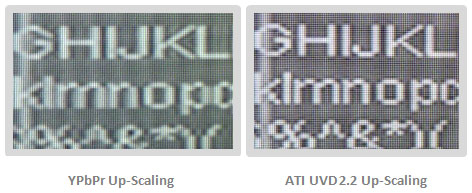
Film and Video Mode De-Interlacing: The Samsung UE32C6000 did an excellent job of reducing jaggies to negligible levels during de-interlacing of high-motion contents, which can be easily mistaken for progressive source. The TV also passed pull-down detection found on the HQV disc with flying colours.

Digital Noise Reduction: Thanks to Adaptive Noise Reduction, enabling NR did not cause any form of adverse motion related artifacts (e.g. smearing). Motion detail and saturation levels remained true to the content.
Gaming
The Samsung UE32C6000 could have triumphed in the game sector, but sadly it was let down by high input lag. However, casual players may not be able to detect the latency in Game/PC Mode with certain types of games (e.g. RPG, Racing, RTS etc.). However, FPS and Rhythm Game fans may want to avoid Samsung UE32C6000 and opt for a model with input lag of less than 30ms.
Audio Performance
Aside from notable improvements in viewing angles and black levels, Samsung also managed to improve the sound quality on the UE32C6000 by adding a low-frequency enhancer behind the unit. It not only produces audible low frequencies, but also provides fuller sound (with help of the built-in equalizer) as opposed to cheap and metallic sound usually associated with Super Slim panels. However, it is best not to push volume level beyond 30 as it causes audible distortion.
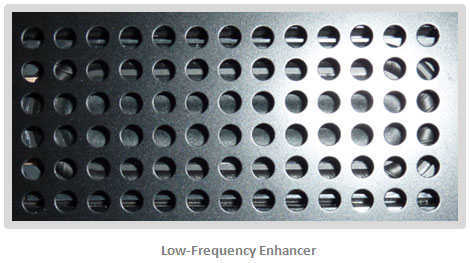
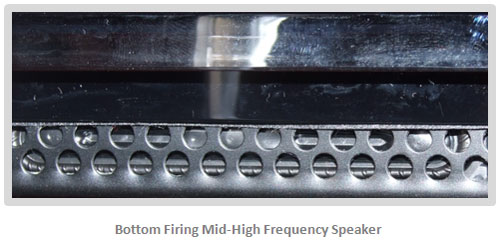
Sadly, there is no headphone jack on the Samsung UE32C6000, which isn’t unique to the model in question. It would be ideal for a smaller TV to have headphone jack as it is often placed in the bedroom.
Conclusion
Pros
- Excellent HD Performance
- Excellent Build Quality
- Improved MCFI and Motion Detail (in Comparison to 2009 Model)
- Accepts Blacker than Black (HDMI-RGB)
- Excellent Primary Chromaticity and Greyscale (Post-Calibration)
- Improved Viewing Angles (in Comparison to 2009 Model)
- Excellent Digital Noise Reduction
- Excellent GUI and User Configurable Options (Including Embedded Test Patterns)
- Negligible Transformer Noise
- Responsive Remote
- Good Over-all Uniformity for a S-PVA Panel
- Accepts and Displays 1080p24 Without Telecine Judder
- Improved Sound Quality (in Comparison to 2009 Model)
- 3D CMS
- Excellent Dynamic Range and ANSI contrast Ratio
- Superb SD Performance via YPbPr (Including Scaling)
Cons
- Undefeatable Backlight Dimming
- High Input Lag
- Visible Banding and Posterization (HDMI) due to 8-bit Processing
- Doubling Effect (Ghosting) when the Backlight is set to other than 20/Anti-Blur is Disabled
- LED Motion Plus doesn’t Improve Motion Resolution/Detail
- Average Default Greyscale Accuracy (Movie Mode)
- Location of HDMI Ports
Summary
Samsung produced yet another winner that will appeal to many users, and managed to improve upon the previous model in every aspect bar input lag. For that reason and the auto-dimming, the Samsung UE32C6000 slipped away from the top spot. Hopefully Samsung will acknowledge that HDTVs of today are no longer mere devices that display images from STBs and Deck Players, but serve a much wider purpose (e.g. monitors, gaming, picture frame etc.). We appreciate that it is not easy to lower the input lag while rendering high quality image that is pleasing to the eye, but surely there must be a solution to amend the issue. We urge Samsung on behalf of our readers to take input lag gravely and to reduce it to an acceptable level of 30ms or below.



Great review as always, but it would be great if you could post the calibrations settings, because I am happy owner of this TV but cant find any good calibrations settings for this TV.
Thank you
70ms!?
its getting much worse then before. thank god i choose the pana plasma :D
“Samsung’s unique 3D CMS (Colour Management System) is close to perfection and allowed us to obtain virtually accurate colours.”
Did you post the wrong image for this section? As there are quite a few issues in that image, plus there is no information 4 luminance which is the most important area.. In fact quite a lack of the usual detail was this review rushed?
I had some trouble getting one of our colorimeter to function correctly with CalMan, so I had to resort to alternative methods or return the unit without sampling it. I apologize for lack-of luminance chart and hope to have to issue resolved soon.
As for the calibration settings, we’ll try and publish it ASAP.
Did you try going in the service panel to disable auto-dimming? My B6000 suffered from that problem and i soon fixed it.
Can you actually remove the dimming and get stable blacks, or does it simply trade it for the backlighting cutting out instead? I remember when I was reviewing the C8000 LED LCD for another site, and was told that a service menu change defeated the dimming – which was sort of true, after the change, the lighting would CUT out rather than dimming out, which was even worse!
I have the 46 inch version myself and pic is amazing. Could you publish your settings please
Great review.
Could you publish your settings please
Thanks for the review. The detailed benchmark test results are as always very much appreciated.
Great review. Following which I bought a ue32c6505 from Dixons. Is this model part of the 6000 family, maybe specially coded for the retailer and does your reviewt relate to it. Samsung code nombers are bewildering! They do not recognise the 6505 on their (very slow) site. Do you know what the numbers mean? Why is there absolutely no reference in the handbook to Freeview?
@Andrew Mortimer: Usually, last number in Samsung numbering means only design changes.
I have got this Tv and am very satisfied. Might publish your calibration?
Nice review, I got the 40C6000 and I’m very happy with it.
The only problem for me is the input lag, but watching movies is very nice.
I have some calibration done to my tv, but it would be nice to have you calibration settings as well.
Good job with the review.
Kind regards,
Nice review about this machine. Can’t wait for the published calibration settings.
Regards,
Kevin
Hi,
please can puplish the calibration settings?!
thanks!
I bought this tv 3 weeks ago it was either ue32c6000 or Sony ex32703. After a demo of both I could see little difference and bought the samsung as it was £100 cheaper. I’m very impressed overall and freeview hd is very sharp. There is slight lack of detail in dark scenes and reds can appear over done. Adjusting calibration can improve this though. Adjusting the equalizer ensures Sound is good but you need to link to sound system if you like listening to music to improve base.
Please publish review calibration! Cheers Will.
Just wondering if Neil still posts on here his settings were for m86 bdx LCD. He was. A proper TV setup guy with imPressive knowledge. If you are there Neil do u have settings for led series 6 please. Or if hdtvtest can be bothered to answer every post is asking same question were are your settings ?
The settings will be online very shortly. But remember, the settings are unique to the test model.
cheers. Neilo. Your. Not Neil the welL of TV knowledge by any chance. Are you ?
Great review! I just bought Samsung UE32C6715. I wonder, is it the same panel? Can I use the same settings you’re publishing soon?
were are the settings – do u guys actually have any or are you waiting for a mag like what home cinema to publish theirs
It would seem Vincent is quite busy at the moment. I’ve uploaded the settings to my SkyDrive account for the moment.
http://cid-9c09d09ec80b78d1.office.live.com/browse.aspx/Public/Temp/32C6000?uc=3
Remember, the settings are unique to our test model and it may not provide the desired results.
@Nielo TM Thank you ;)
How does it compare to LE40C650 (I know different sizes) in terms of picture quality? are these samsung LED tvs worth the price premium over normal LCDs ?
@ Andre: No. The 40C650 is superior in every perspective.
Cheers I’ve put settings in and ill use them for evening watching blu ray. Thanks so much guys much appreiated. Ill use my own for gaming and daytime.
Great! Thank you Nielo. I just bought UE32C6700 .. In your opinion can I use the same settings tha you published?
Is this tv suited for playing with a console like PS3 or Xbox? Has this TV a game mode that reduces the input lag?
Was the input lag measurements with the 100Hz off? Best regards
Nielo,
Thanks for the clear review. I was debating whether I should buy the c650 of the c6700. Given the fact I want to put against the wall the thickness made the decision. I just bought the C6700. Beautiful screen but I understood that with some calibration I will be able to further enhance the quality!
Nielo, I am also looking forward to receive your settings used in the post-calibration.
Thanks in advance!
Regards,
Roland
Does anybody know whether the 5:5 pulldown problem has been resolved with firmware updates?
@Nielo TM:
I was wondering whether it could be that the ghosting issues you noticed were due to a faulty unit.
Also, in your opinion what are the odds that the C6500 model presents the same issue?
Moreover, do you have knowledge as of whether the issue of unapplied even pulldown has been resolved with the firmware updates?
Lastly, do you know whether they introduce controls over auto-dimming in the latest firmware, or is that even possible?
Thank you.
Hallo Nielo !
Can you please help me?
I am going to buy a new TV in the following days. I am between
LED Philips 32PFL8605H Price: 1033 EU and LED Samsung UE32C6000
Price: 699 EU. Which TV would you recommend me to buy?
My name is George and I am from Greece.
Thank you very much Neilo :-)
Could You tell me if the c6500 has the same video procesor 8.bit or c6500 has beter 10-bit?
Before I continue, I would like to say sorry for the late reply and thank you all for the warm comments.
@ Simon: Yes but the grayscale is unique to every unit.
@ Julien: It does have Game Mode, but it doesn’t reduce the lag enough.
@ Julien: You can’t enable 100Hz in Game Mode.
@ Roland : http://cid-9c09d09ec80b78d1.office.live.com/browse.aspx/Public/Temp/32C6000
@ subichan: I can’t provide any info regarding the any update since we don’t keep the unit for prolonged periods. As for the double image ghosting, it actually problem with certain LED sets.
PS: You can watch 24p as intended by setting Motion Judder and Blur Reduction to 0.
@ George: I am completely ignorant of Philips sets, so I can’t recommend one over the other.
@ Danijel: I’m not sure. The C6000 should have implemented with 10-bit processor
Is the LED lighting full backlit or edgelit?
It uses edge-lit LED lighting technology.
Warmest regards
Vincent
Thanks for the review on the UE32c6000. I have bought the 37in and wanted to ask if the calibration settings are the same as for the 32 so I can use those.
Thanks
Heu Neil.. I’m going to purcahse UE32C6000? is it worse enough to buy, i’m pyaing around 1200$, or SOny EX700 models are better? please advise.. i’m going to buy for tmw adn need ur advice.. thanks bro.
Hi
I have purchased the 40C6510 and after a week have noticed some clouding on dark screens. It looks very similar to your “undimmed shadow detail set to +2” picture in the review. Is this really normal? (I have a CN05 panel.)
I am wondering whether to change the set as in all other respects it is a great set. Am I likely to get another set with similar issues?
Thanks
Gary
Hi,
I am experiencing exactly the same issues as Gary on my 40C6530. John Lewis kindly swapped my first TV because I was experiencing this problem, now on my second TV and it looks exactly the same.
Is this normal? This is my first flat screen, is this something that you see on TVs of this type? or should I consider returning the TV?
Many thanks,
Joe
PS The picture settings you put on here look great (with the obvious exception of the above) thanks for your hard work!
What the new firmware changelog on UE32c6000 pls help.
Thx
Thanks for uploading the settings used. They work great with my Blu Rays. Do you happen to have any calibrated settings specifically for GAME MODE?
The worst user interface (menus) ever!
Cons
– Instead of always relying on the middle button of the multi-direction cross, you sometimes need to press it and sometimes another button called “Tools”. Mistakes, time loss and big headache guaranteed
– When you dial a single-digit channel, for instance 1, it waits 5 seconds till it’s sure you don’t want to dial a two-digit channel, so you always have to wait 5 seconds every time you switch the channel. Sony TVs instantly switch to the single-digit channel and then to the two-digit one if dialed quick enough
– Sorting the channels order is a nightmare: if you place a channel in an empty spot (that was free), this changes the number of all above channels. Then, you have to reorder tens of channels
– You sometimes need to scroll down to a “Confirm” button and sometimes can confirm just by pressing the middle button. Different behaviors in similar situations. The Korean engineers at Samsung should definitely have a usability course
– The screws to fix the foot are real crap, they can’t get it even with the highest care. Don’t expect to drive them more than half way
– Stupid headset jack on top off screen when it should be at the bottom
Pros
– Very clear image
– Amazing phone support (I dealt with two different persons). Very pleasant and skillful. Not the usual bullshit
Conclusion
If you didn’t throw it through the window during the setup phase, you’ll enjoy a good image
I cant get freeview on my Samsung UE32C6000
Hi,
I am thinking about buying one of this (Samsung UE32C6000 or the LG 32LE5500)
I want to conect my PC with HDMI and the PS3 HDMI. and wants to play (mkv,mp4, from HD).
witch one shuld i go for?
They seem both good, and price is almost the same.
Thanks.
Fadi.
I got the Samsung UE32C6540 for £599 from Comet in the sales and use this with my HTPC via HDMI. Playback resolution of 1920×1080 looks fantastic from the HTPC. 1080p mkv files look great.
hi Nielo
thanks for the review and the settings.i have 2 questions for you if you don’t mind.
1.what are the recomanded settings when i’m using the ps3 for best perfomance
2.when i am trying to inputed the settings you uploaded i can’t understand the motion plus settings.they seem to be diffenet from my set.every thing else works great.
thanks in advance
Hi All,
I’ve got the C6700 (37″) version of the samsung and was wondering if anyone had a list of settings for it? Considering it’s been out a few months now (I have the new model with the nicer base), calibration settings are proving hard to come by.
Thanks :)
Anyone having problems with blacks smearing/trailing when gaming on ps3?
samsung c6500
thanks
I own a 32C6000, and it DOES have a 3.5 mm headphone jack. Shame it’s placed very high on the side of the back panel.
Hi there,
I am querying and need some help because I am about to buy a TV and I’m indecisive between three models, one of them referred in this review.
My choices are all going to the same brand “Samsung” and I not sure about what models to choose. My preferences are between:
UE32C6510
UE32C6000
LE32C650 (not LED)
My major points of decision are: power consumption, quality of image, durability. Internet Tv is not a decision point on choice.
Can you please help me to decide which from these 3 models is the best choice.
Regards to you all